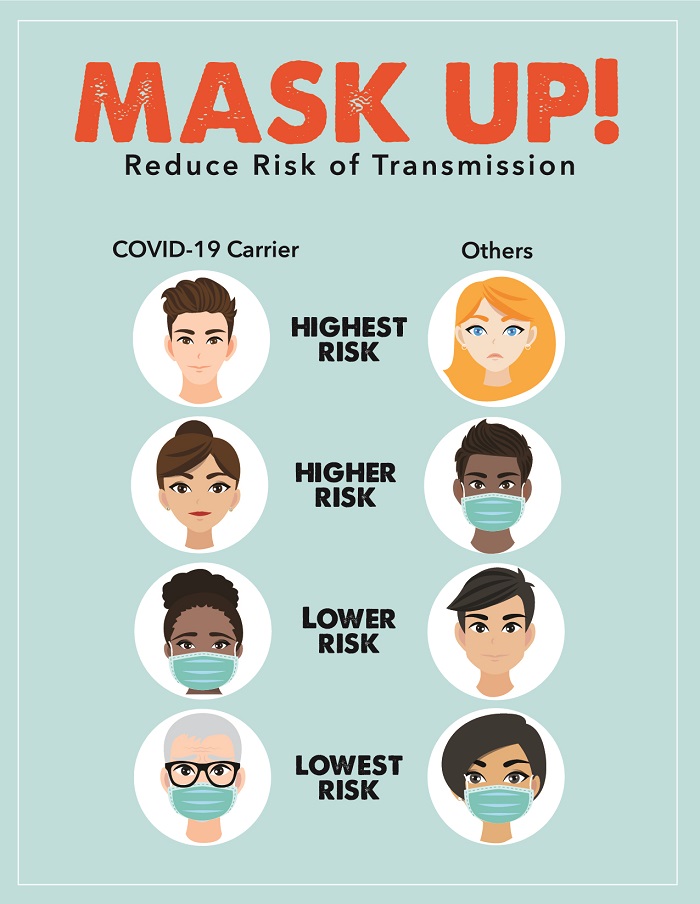A study from Denmark has put into question the effectiveness of wearing a mask. It’s based on a randomised control trial of 6024 people, assigned either to a mask-wearing group or a control group that didn’t wear a mask. 42 people who wore masks, and 52 people who did not, contracted Covid during the test period. The study notes that “the findings are inconclusive, with CIs [confidence intervals) compatible with a 46% decrease to a 23% increase in infection.” Prof. Carl Henegan, writing for the Spectator, has seized on this as proof that any effect masks have is small. (The Spectator, of course, has serial form in seeking to belittle or deny the seriousness of the disease.)
The problem with that conclusion (or the lack of it) is that the Danish study has not actually tested whether masks are doing what they’re supposed to do, which is to slow the rate of infection. The graphic which follows, from the New Jersey Department of Environmental Protection, explains what should happen. The control trial has been looking at people on the top two lines – putatively, groups at higher risk. The distinction between the higher and lower risk (lines 1-2 and 3-4) depend on people who are infectious wearing masks to stop the spread. There are claims on the web that the risk on line 1 is 90%, the risk on line 2 is 70%. I don’t know whether those numbers are well founded, but if they are right, the expected values from 94 cases would be 41 masked cases (42 actual) and 53 unmasked cases (52 actual), which is bang on the nose. The claim that the risk of transmission reduces to 5% on line 3 is potentially far more important, but Danmask-19 can tell us nothing about that. Whatever the true figures may be, the risk of transmission is not the subject of the control trial.
